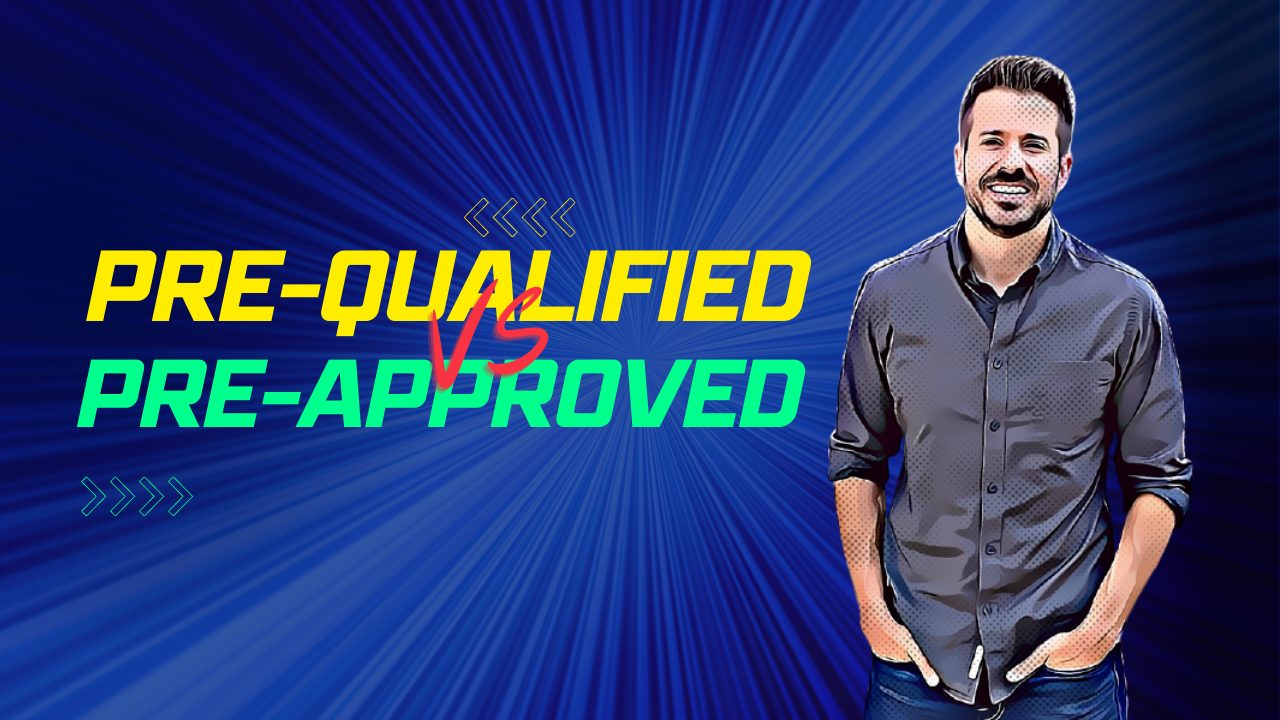https://youtu.be/wRb2qK0RkDU There is no set definition about what is considered pre-qualified and what is…

9 Benefits of an FHA Loan | Omaha NE Buyer’s Guide
Why would an FHA loan be the best option for you?
The FHA loan is the original low-down-payment mortgage. More recently conventional financing has added its own low down payment options, but, for many buyers, FHA is still the best option. FHA allows less-than-perfect credit, higher debt-to-income ratios, and flexible down payment options.
We are a local lender serving Omaha, Papillion, La Vista, Bellevue, and all of eastern Nebraska. If you would like to know more about the FHA program we can help.
For a free consultation go HERE
- Qualify with less than perfect credit
- High debt-to-income ratios
- Low down payment
- Gift funds from relatives allowed
- Non-occupying co-signers allowed
- Large seller credits
- Flexible rules on past bankruptcies
- Active judgments okay with a payment plan
- Not limited to first-time home buyers
Qualify with less than perfect credit
FHA was specifically designed for buyers with limited or less-than-perfect credit. If you have had past late payments, collections, or even a major event like bankruptcy, you may still have options with the FHA loan program. Even with a low down payment FHA will go down as low as 580* on credit scores. If you are a buyer with a limited credit history, FHA has options for you as well. FHA will allow “non-traditional” credit if a buyer does not have any active credit showing on their report. Non-traditional credit is something you pay monthly that does not report to the credit bureaus. For example, car insurance, rent, cellphone, utilities, cable, and internet are all monthly expenses that do not report on credit. For buyers with no active credit history, 12-month payment history on a few of these can be used instead.
The flexible credit requirements make FHA an ideal program for young buyers. Before you disqualify yourself from home ownership due to a lack of credit, talk to a local mortgage lender to see if you can use the FHA program.
High debt-to-income ratios
FHA allows much higher debt-to-income ratios than traditional home financing. Your debt-to-income ratio is calculated by taking your gross monthly income, the new house payment, and the minimum payments on all credit report debts. The percentage of your monthly obligations compared to income is your ‘Total Debt-to-Income Ratio’. Traditional mortgage financing only allows your debt payments to equal 50% of your monthly income. Also, in traditional financing compensating factors are usually required to go up to that 50%. Compensating factors are high credit scores, large down payments, and asset reserves. FHA on the other hand will go up to 56.99% on buyers with less than perfect credit, a low down payment, and limited assets.
Consider all costs of home ownership
It is important to point out something here. FHA does allow high debt ratios for buyers will limited assets and less than perfect credit, but that does not mean every buyer should take advantage of it. There are situations where it is okay to go with a high debt ratio. A buyer might have additional income that cannot be verified or there could be other income earners in the house but not on the loan.
However, if we are verifying all available income and still pushing the debt ratios to the max, it is important that buyers, especially first-time home buyers, realize the added expenses in home ownership. A house will have maintenance and annual expenses that are not factored in the debt ratios. If your minimum monthly obligations add up to almost 57% of your before-tax income, it is important to take all costs of home ownership into consideration.
Low down payment
FHA is the original “low down payment loan”. Traditional mortgage financing has added its own low down payment options over the last few decades, but FHA is still the most flexible option. Just like on the high debt ratios, FHA will allow the minimum 3.5% down even without other compensating factors. While other low down payment options will require excellent credit and a strong overall buyer profile, FHA gives buyers with little or less than perfect credit low down payment options.
FHA’s defining feature is the low down payment option. If a buyer has a larger down payment, it is more likely that other forms of financing will be the better option. FHA is often confused with a first-time home buyer program because it offers a low down payment option even with little or no credit or assets. For buyers with limited credit history and limited funds, FHA is usually the only option.
The flexibility for a low down payment that FHA provides opens up home ownership to buyers who do not qualify for other programs. Though FHA is a great stepping stone into home ownership, it is important to monitor the new home’s equity and mortgage for opportunities to refinance into more traditional loans.
Gift funds from a relative allowed
Because it was designed for buyers with few funds to contribute towards a home purchase, FHA offers flexibility on the source of funds as well. Some buyers may not have access to the 3.5% down payment or funds to cover loan costs. FHA has options for these buyers.
FHA will allow family members to gift money to the home buyer for any funds needed to purchase a home. Family gift funds can cover the down payment, closing costs, and escrow. Gift funds can also be used to pay off any consumer debt if needed to qualify the home buyer.
Yes, asset source matters
Now you may be asking why lenders care where your money came from. This is a point of frustration for many buyers. All loan programs document and trace all assets used for the purchase of a home. There are assets that can be used and funds that cannot be used towards the purchase of a home. I go over this in more detail here, but it is important that you discuss the source of all of your assets with a loan officer before starting the home-buying process.
Non-occupying co-signer allowed
It should be clear by now that the FHA program was designed to increase home ownership. FHA’s flexibility on credit, income and assets makes homeownership available to buyers shut out of other financing options. One important, but less known, option on FHA is the non-occupying co-signer.
A non-occupying co-signer must be a family member. A family member can go on the loan with the FHA buyer to help them qualify. As the name implies, the co-signer does not have to live in the house to go on the loan. A family member will go on the loan just as if they lived in the house. We will use their credit, income, and assets just like any buyer. If the added co-signer helps the primary buyer’s overall profile, they can go FHA.
Things to consider
It is important that the non-occupying co-signer understands they will be attached to the loan and property as if they were occupying the property. If the co-signer wants to take out debt in the future, that new mortgage payment will be included in their debts.
Because the co-signer is liable for the mortgage debt, it is a good idea to create a long-term strategy to refinance them off the loan. We can monitor the primary buyer’s credit, equity, and income for opportunities to refinance at a later date.
FHA’s Kiddie Condo Program
One great way to use the co-signer options is called the “Kiddie Condo” program. The co-signer, usually a parent, can purchase a home with their 18-year-old child. As long as the child will occupy the property as the primary residence, they do not have to have any income. As long as the parents qualify for the payment with their income, they can use all of FHA’s advantages. This is a great opportunity for college-bound kids to become homeowners. Just get a couple of friends to rent out some rooms to help pay the mortgage. In four or five years the college graduate will have a house with potentially 10s of thousand in equity. It is a great way to get a financial head start right out of college.
Large seller credits
Let’s say a buyer does not have the funds to close. Let’s also assume they can get some of the funds from a relative but are still a bit short for the cost and escrow. There are still options with a seller credit.
All loan programs allow seller credits. However, FHA again is the most flexible. The seller can contribute up to 6% of the purchase price towards cost and escrow (they cannot pay the down payment) on FHA. That 6% is almost always more than enough in Omaha to cover all loan costs. If a buyer does not have the funds, or would just like to keep more of their assets after close, they can negotiate seller credits into the contract.
This is where having a good knowledgeable realtor is important. The lender and realtor can work together to structure any offer in a way that is most beneficial to the FHA buyer. If seller credits absolutely must be a part of the negotiations, the buyer’s agent can push for these with any submitted purchase offer.
Flexible rules on bankruptcy
FHA allows buyers with a recent bankruptcy or, in some cases, currently in bankruptcy to purchase a home. If you are looking to purchase a home and had a chapter 7 bankruptcy in the last few years, FHA is the way to go. FHA will lend to a buyer as long as their chapter 7 bankruptcy was discharged two years prior to starting the loan. If a buyer is in the middle of paying off a chapter 13, they can qualify for FHA as long as they have made 12 on-time payments towards the chapter 13 payment plan. Any buyer currently in chapter 13 would need to get permission from the court to take on new debt.
Meeting the waiting period on the FHA bankruptcy rule does not guarantee you will qualify. The buyer will have to show that they have re-established at least a small credit history. Underwriting will also comb through a file a bit more closely with a recent bankruptcy showing on credit.
Active judgments okay with a payment plan
For buyers that have active judgments, most loan programs will not provide financing. Traditional financing requires that all judgments be satisfied prior to closing on a home purchase. FHA will also require that judgments be paid in full, but they do provide an alternative for buyers that do not want to fully satisfy an active judgment. FHA will allow active judgments if there is a payment plan in place with the debt holder and 3 months of payments have been made.
This monthly payment must be added to the debt ratios. The 3-month requirement cannot be pre-paid. There must be three actual months of payments on the plan. Many buyers are not aware of active judgments on their credit until we check it for them. In these cases, they will have to set up the payment plan and wait three months. To get the most out of this waiting period, we will give the buyer tips on how to improve their scores in the meantime.
Not limited to first-time home buyers
Because of FHA’s flexibility on credit, income, and assets, it is assumed that it is a first-time home buyer program. This is not the case. Anyone can use the FHA loan program. If you currently own a home and want to purchase another home, the FHA program is available to you. Now, why would you do this?
Do you own a home, but have had recent credit issues? You are not stuck in your current home. Current homeowners have the option to sell and purchase again using FHA. You could even keep your current house as a rental and purchase a new home using FHA financing…Assuming the current home is also not financed by FHA. Many first-time home buyers have a misconception about the programs available. Most loan programs do not differentiate between first-time buyers and other buyers. While there is usually no benefit to being a first-time home buyer, there are no restrictions for first-time home buyers. All programs are open to all buyers.
How do you know if you are qualified?
Don’t disqualify yourself before talking to a mortgage loan officer. Many buyers assume that home ownership is out of their reach. That is not the case. Home financing is available to all kinds of buyers. It is free to reach out to a local mortgage loan officer. They can let you know if you qualify or at least give you advice on what you need to do to qualify.
Other useful links
- How to improve your credit
- The 20% down rule on conventional
- What is Escrow?
- How is income calculated?
- Why your assets matter
- Mortgage Calculator
- Is Credit Karma accurate?
- FHA vs Conventional, which is better?




